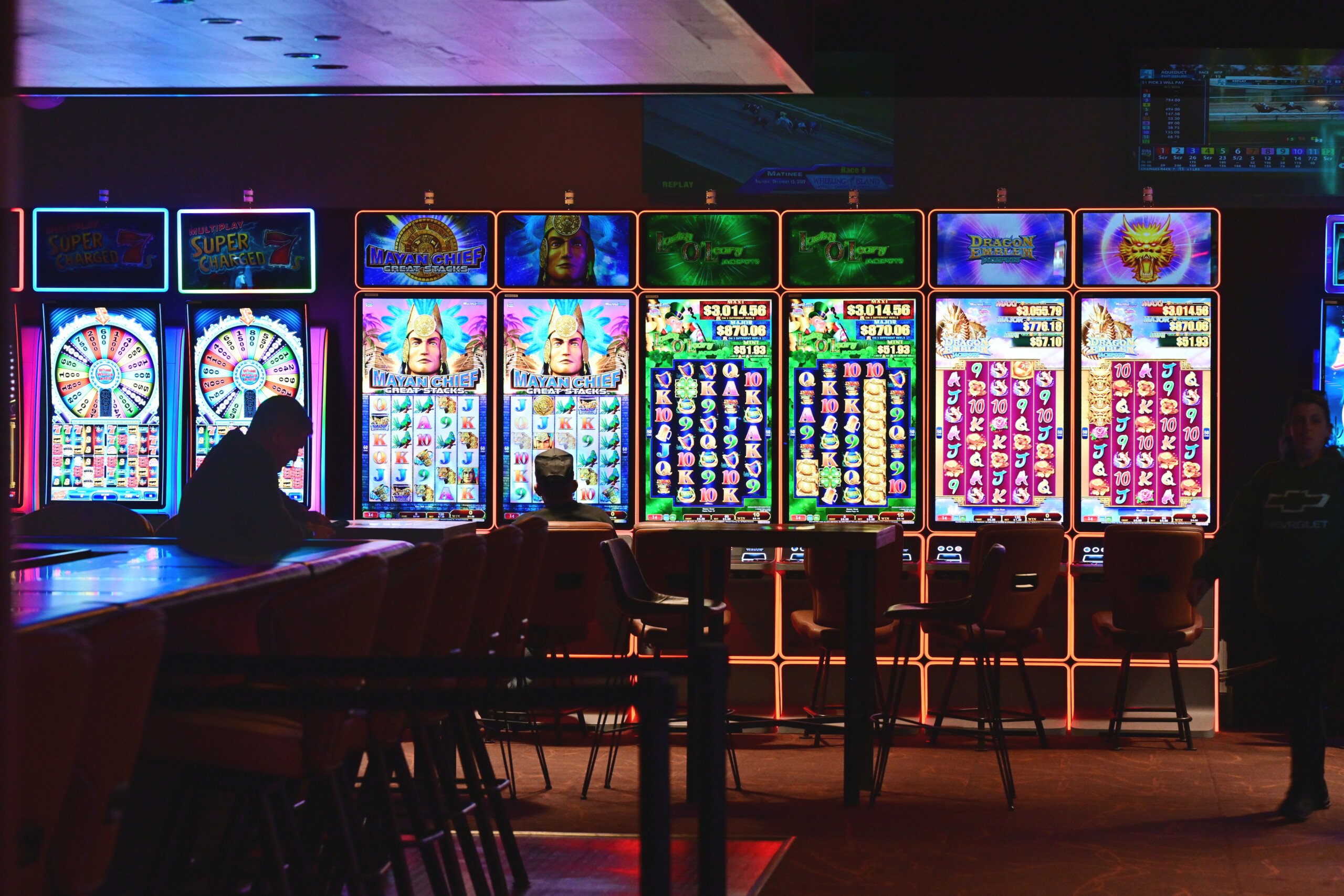The Fascinating History of Slot Machines
The history of slot machines is a captivating adventure that mirrors the evolution of entertainment and gambling across the years. Starting from their simple beginnings in the late 19th century to growing into a staple in gaming halls across the globe, these games of fortune have experienced remarkable evolutions. Casino slots games have mesmerized players with their vibrant graphics, enticing concepts, and the potential of transformative wins.
At first designed as mechanical instruments with turning drums and limited icons, slot machines have grown into cutting-edge electronic games that include modern tech and interactive components. Currently, they attract millions of players, each aspiring to strike it lucky with just the lever pull of a handle or the tap of a button. Exploring the fascinating background of these machines reveals not just the tale of a well-liked activity, but also a reflection of cultural shifts and progress in technology over the decades.
One of the Birth in Slot Machines
A tale of slot machines starts in the final years of the 19th century, a time when machines were becoming popular in entertainment venues. A groundbreaking slot machine was invented by Charles Fey in 1895, known as the Liberty Bell. This machine featured three spinning reels and five symbols: hearts, diamonds, spades, a horseshoe, and the legendary Liberty Bell. Players would pull a lever to spin the reels, and if the symbols aligned in a particular combination, they would win a payout. Fey’s invention quickly captured the attention of gamblers and set the foundation for future developments in casino slots games.

As the concept of the slot machine gained traction, various inventors sought to improve upon Fey’s design. By the early 1900s, these machines were becoming a common sight in saloons and amusement parks. In 1907, the first electromechanical slot machine was launched by Herbert Mills, featuring a more intricate system of payout mechanisms and the iconic fruit symbols that are still linked to slots today. This evolution marked a significant shift in the gaming industry, as machines became more entertaining and user-friendly, attracting more players.
The popularity of slot machines remained high throughout the first half of the 20th century, leading to their widespread adoption in casinos across the United States. However, as legal restrictions on gambling during the Great Depression posed challenges for the industry. Many machines were outlawed, but this did not stop innovators. Instead, they adapted by creating machines that dispensed candy or gum instead of cash prizes, effectively circumventing the restrictions while still providing the thrill of a casino slots game. This creativity kept the spirit of gambling intact, setting the stage for the eventual resurgence of slot machines in modern casinos.
Evolution of Casino Slot Innovation
The history of gambling machines commenced in the late 19th hundred years with the invention of the first mechanical slot machines. A mechanic named Charles Fey, a West Coast mechanic, presented the Liberty Bell slot machine in 1895, which boasted three spinning reels and five icons: heart shapes, diamond shapes, spades, a lucky horseshoe, and the bell symbol itself. This straightforward yet engaging layout laid the basis for the progress of casino slots game, creating an immediate draw for gamblers searching for fun and a shot to earn.
As tech matured, so did the design and functionality of slot machines. By the central 20th century, electromechanical machines surfaced, incorporating electrical components to boost gameplay and increase payout opportunities. These improvements permitted for increased sophistication features like several paylines and bigger jackpots. The gaming establishments embraced these advances, resulting in the emergence of gambling devices as a major contributor of income within the gambling sector, radically altering the experience of playing slots.
The late 20th and beginning 21st centuries brought the age of digital technology, causing the introduction of video gambling machines. These machines replaced traditional reels with digital screens, enabling even more imagination in themes and gameplay systems. Gamblers could now enjoy rich graphics and sound effects, along with involving bonus rounds. The transition to web-based gaming further changed the gambling world, rendering slots available to a global population at any time and everywhere, thus marking a fresh chapter in the evolution of gaming machine advancements.
The Cultural Influence of Gaming Machines
These gaming machines have become not only a form of entertainment; they have woven themselves into the fabric of mainstream culture. From movies and television shows to music and literature, these famous gaming machines often act as symbols of chance and gambling. Films like Casino and Ocean’s 11 notably feature slots, depicting them as exciting yet unpredictable elements of the casino atmosphere. Their unique attraction lies in the sound of coins falling, the revolving reels, and the bright flashing lights, which together create an exhilarating atmosphere that captures attention.
Moreover, slot machines have shaped social gatherings and events, making them a centerpiece in casinos and gaming venues. Numerous individuals do not just visit a casino to gamble; they go for the full experience, which encompasses the social interactions and the lively ambiance surrounding these machines. Special tournaments and themed gaming nights centered around slots also showcase their popularity, fostering social connections and collective fun among players. This social element has contributed to the machines’ lasting popularity.
The advancement of technology has also transformed this cultural impact. fabet mobi Digital and online slots have broadened access to these games far beyond the walls of physical casinos. Players can now get their favorite casino slot games from home or on the go, leading to the rise of virtual forums and discussion boards where enthusiasts share strategies and experiences. The ongoing innovation in game design and the inclusion of storytelling have kept the cultural significance of slot machines alive, attracting new generations of players while maintaining a tie to their historical roots.